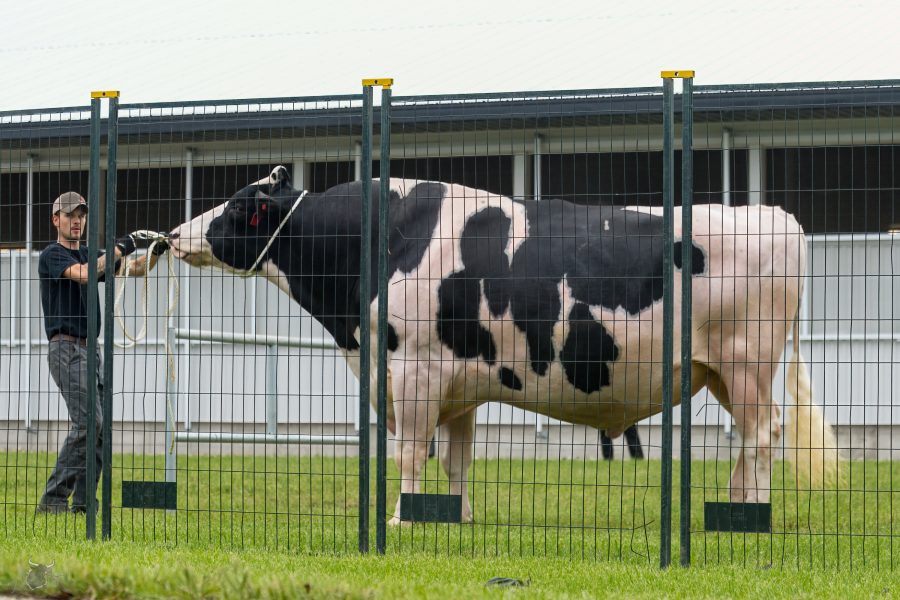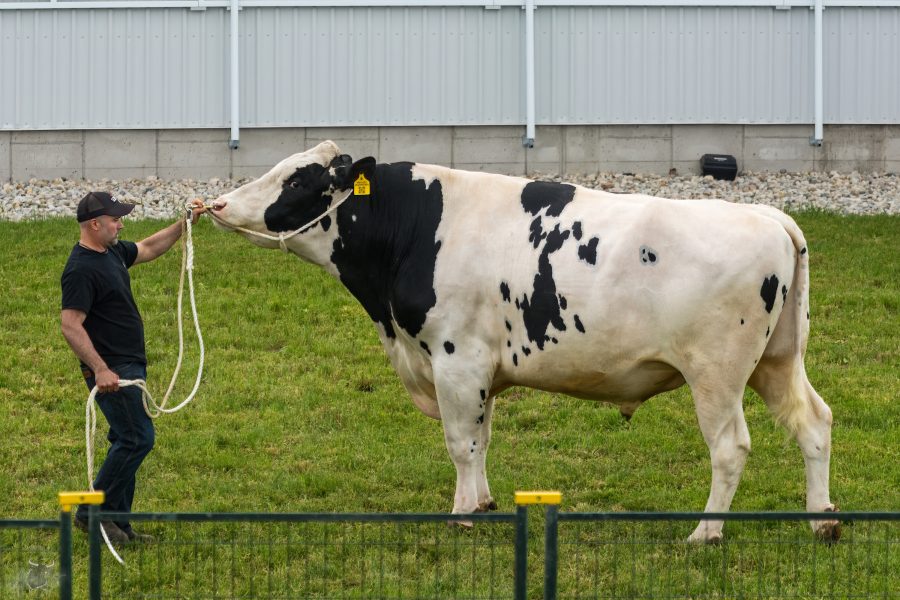Boost your dairy farm’s efficiency with skilled labor. Discover top tips for effective employee training, including when to train and the importance of language.

Imagine operating a dairy farm where every employee is competent, driven, aware of their critical contribution, and empowered. This is a realistic result with enough training, not a fantasy. Seen initially as unskilled labor, dairy farm jobs are changing in line with industry awareness of the need for training. Practical training increases operational performance, involvement, and confidence and helps your staff be empowered. For necessary training sessions, many dairy producers depend on professional consultants. With their expertise and experience, these consultants play a crucial role in designing and delivering effective training programs. Frequent, culturally relevant training courses provide a qualified, involved staff that increases production and the working environment. Learning in their mother tongue guarantees that staff members grasp the content entirely. Modern dairy farming depends on sustainability and success, which rely on staff training to equip them for industry difficulties and promote a good work atmosphere.
The Importance of Language in Effective Employee Training
Training in the employees’ mother tongue serves a purpose beyond practical employee development. It fosters a strong sense of community and inclusiveness among dairy farm employees, ensuring perfect understanding, confidence, and relationships. Sessions in Spanish, for instance, promote clarity and community, enhancing the overall team dynamic. While many people may know English, training in the employees’ mother tongue can further strengthen the sense of community and inclusiveness, making everyone feel connected and part of a team.
Spanish fosters rapport and confidence. Spanish trainers create comfort and involvement by relating more effectively to staff members. This transparency lowers linguistic obstacles and increases interactive training possibilities.
Providing instructions in the employees’ mother tongue goes beyond being a simple communication tool. It is a powerful gesture of respect and appreciation for your staff. When employees receive instructions in their mother tongue, they feel deeply valued and understood, which can significantly contribute to a positive workplace culture and foster respect among team members.
Training in Spanish improves learning, performance, and satisfaction, benefitting the dairy business.
Scheduled Training: A Pillar of Consistency and Excellence in Dairy Operations
Maintaining a consistent training program guarantees dairy workers’ continued competency. The farm should schedule frequent sessions to maintain standards and handle procedural drifts. Procedural drift refers to the gradual deviation from established procedures, which can occur due to changes in staff, equipment, or industry standards. These sessions range in frequency: some farms could find quarterly meetings enough, while others would require monthly training to align with the best standards. Training should also happen as necessary, particularly for fixing procedural deviations or onboarding new staff members.
Training consistency promotes an accountable culture and helps preserve proficiency through constant development. Frequent training courses provide chances to incorporate new technology, test knowledge, and strengthen expertise. Dairy farms guarantee that their personnel are ready for the complexity of contemporary dairy operations by committing to a disciplined training program, improving performance, job happiness, and production.
Assessing the Need for Additional Training: A Holistic Approach
Deciding when to conduct further training requires a sophisticated strategy. Observing procedural drift and discrepancies between published policies and actual practices is essential. Variations in feed management might affect milk output, indicating the necessity for refresher training.
Another essential training event is onboarding new hires. Managers should find out how many fresh graduates are on staff. Did they show up for the most recent training session? If not, start focused instruction to align them with farm policies.
Beyond these, several indicators suggest further training is needed:
- Declining Performance Metrics: Drops in milk yield or calf growth rates may indicate inconsistencies requiring training.
- Employee Feedback: Check-ins can reveal areas where employees need more guidance.
- Technological Updates: Ongoing training is essential to adapt to new advancements.
- Safety Concerns: An increase in incidents should prompt immediate safety training.
Managers must remain dedicated to lifelong learning, track staff involvement, and examine operational statistics. This ensures dairy farmers have a qualified, safe, and efficient crew.
Building Robust Relationships: The Cornerstone of Effective Dairy Farm Management
In the dairy sector, a good work atmosphere depends on solid bonds between staff members. Training and employee performance are more effective with open communication and trust. Employees who trust their trainers and managers participate more in sessions, ask questions, and apply skills to their work. Regular, polite contacts where staff members feel appreciated help to create this trust.
Good communication guarantees precise directions, helpful criticism, and quick resolution of issues. Frequent meetings and encouraging mutual respect help to convert training into a development possibility. Using workers’ chosen language, trainers such as Brady and Salas enhance understanding, rapport, and clarity, increasing job happiness and dedication to excellence.
Enhancing Training Effectiveness: Practical Strategies for Maximizing Employee Engagement and Learning
- Use Real-Life Examples and Pictures: Integrate examples and pictures from your dairy to make the training more relatable and understandable. This helps employees visualize the procedures and their practical application.
- Focus on Key Skills: Concentrate on the most critical skills and tasks employees must master. This keeps the training concise and relevant, ensuring essential practices are understood and retained.
- Bilingual Materials: Prepare training materials in both Spanish and English. This ensures that all employees can fully comprehend the training content regardless of their primary language.
- Employee Safety: Always incorporate safety protocols and guidelines into training sessions. Emphasize the importance of safety in every task to foster a culture of awareness and prevention.
- Engagement and Interaction: Encourage questions, discussions, and hands-on practice during training sessions. This interaction helps solidify the learning and allows employees to clarify any uncertainties.
- Monitor and Review: Continuously monitor employee comprehension and application of the training. Use follow-up sessions and observations to ensure that skills are implemented correctly and adjust training as necessary.
- Respectful Scheduling: Be mindful of your employees’ time by scheduling training sessions at convenient times and keeping them focused and to the point. Providing lunch can also create a more comfortable and conducive learning environment.
- Regular Refresher Courses: Do not hesitate to retrain employees on critical topics periodically to reinforce their knowledge and address any procedural drifts that may have occurred.
Systematic Monitoring and Evaluation: Ensuring Training Efficacy and Workforce Development
Ensuring efficacy depends on tracking and assessing staff understanding throughout training. Direct observation, interactive questioning, and feedback mechanisms like tests, surveys, and quizzes help achieve this. While interactive questions involve workers and test their knowledge, direct observation lets trainers see how they interact with the content.
Examining statistics, including quiz outcomes and attendance for training, offers insightful analysis of training efficacy. Should several staff members struggle with a specific process during a quiz, retraining or more review is needed.
Monitoring employee behavior after training is just as important. Managers should look for areas of development in everyday activities, work performance, and procedure adherence. Constant procedural drift suggests that the training may have to be changed.
Monitoring and evaluating systematically guarantees not just immediate training effectiveness but also helps to assure long-term worker development. Higher work satisfaction, improved productivity, and general excellence in farm management follow from constant improvement of training programs depending on observed behaviors and data analysis.
The Bottom Line
Transforming farm labor from a perceived unskilled job into a competent workforce able to satisfy current dairy needs depends on training. Regular, language-based instruction produces competent workers with great confidence in their responsibilities. Frequent training courses preserve operating standards and help to correct procedural slippage. Development of trust using linguistic and cultural awareness improves involvement. Using many experts guarantees that training requirements are satisfied from a whole perspective. Constant improvement depends on ongoing observation and evaluation of training efficiency. For sustainability and success, well-organized training courses are essential; they improve work satisfaction, reduce absenteeism, and foster greater loyalty. Well-trained staff members uphold high animal care and farm management standards, directly influencing dairy output and quality. Funding vital training is brilliant and pays off handsomely. Using formal and informal approaches in preferred languages, managers and farmers should prioritize continuous development, improving skill levels, and fostering a positive working atmosphere. Accept thorough training as essential for dairy farm management to develop.
Key Takeaways:
- Engage experts such as veterinarians, county extension agents, and consultants for comprehensive training support.
- Conduct employee training sessions in Spanish to enhance comprehension and build trust.
- Hold regular training sessions, whether monthly, quarterly, or during new employee onboarding.
- Address procedural drift by regularly evaluating and correcting deviations from standard practices.
- Emphasize the importance of each employee’s role in the overall success of the farm.
- Monitor employee comprehension and engagement during trainings to ensure effectiveness.
- Use visual aids, examples, and hands-on demonstrations tailored to your specific farm operations.
- Be respectful of employees’ time and consider their feedback when scheduling and planning training sessions.
Summary:
Dairy farms are increasingly recognizing the importance of employee training to improve operational performance, involvement, and confidence. Professional consultants play a crucial role in designing and delivering culturally relevant training programs that provide a qualified workforce. Language plays a significant role in effective employee training, as it fosters a strong sense of community and inclusiveness among employees. Consistency in training promotes an accountable culture and helps preserve proficiency through constant development. A holistic approach to assessing the need for additional training involves observing procedural drift, discrepancies between policies and actual practices, onboarding new hires, and considering factors such as declining performance metrics, employee feedback, technological updates, and safety concerns. To ensure a qualified, safe, and efficient crew, dairy farms must remain dedicated to lifelong learning, track staff involvement, and examine operational statistics. Effective dairy farm management relies on building strong relationships between staff members, fostering open communication, and using practical strategies for maximizing engagement and learning. Systematic monitoring and evaluation are essential for ensuring training efficacy and workforce development.



















